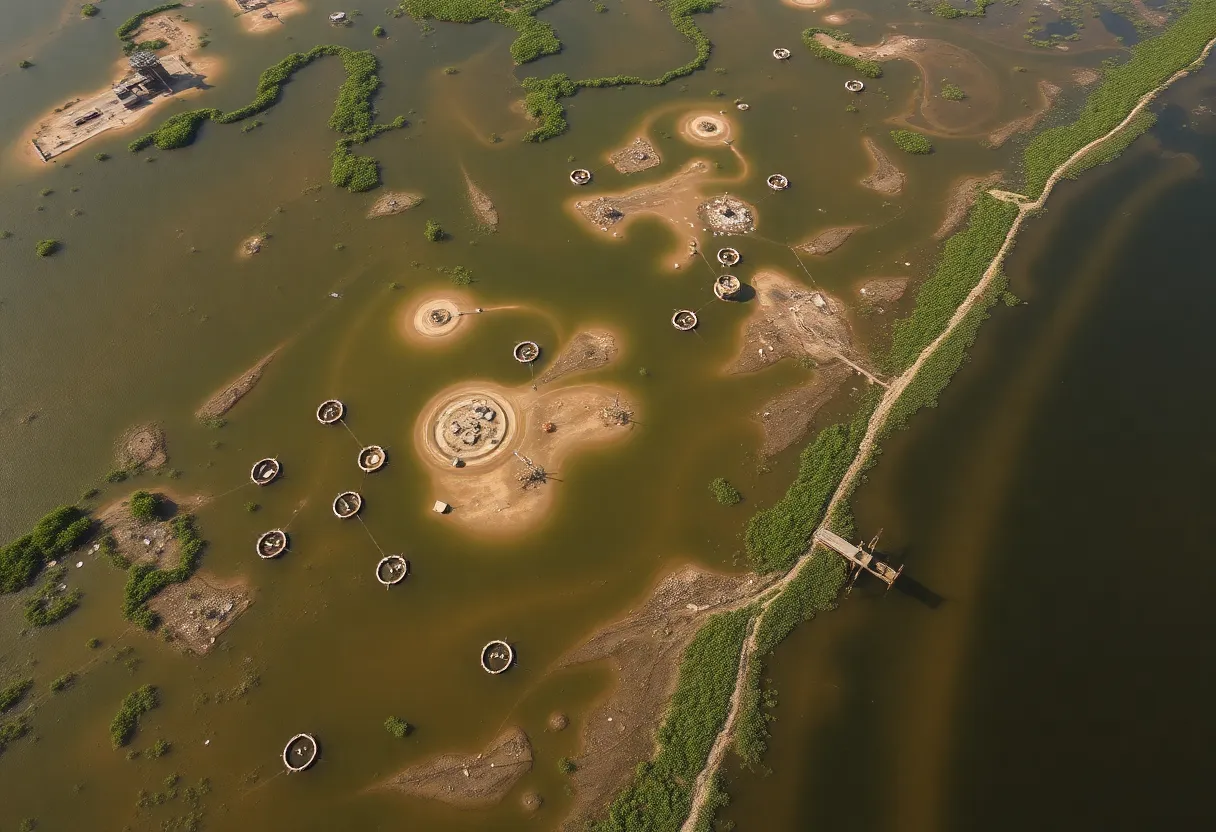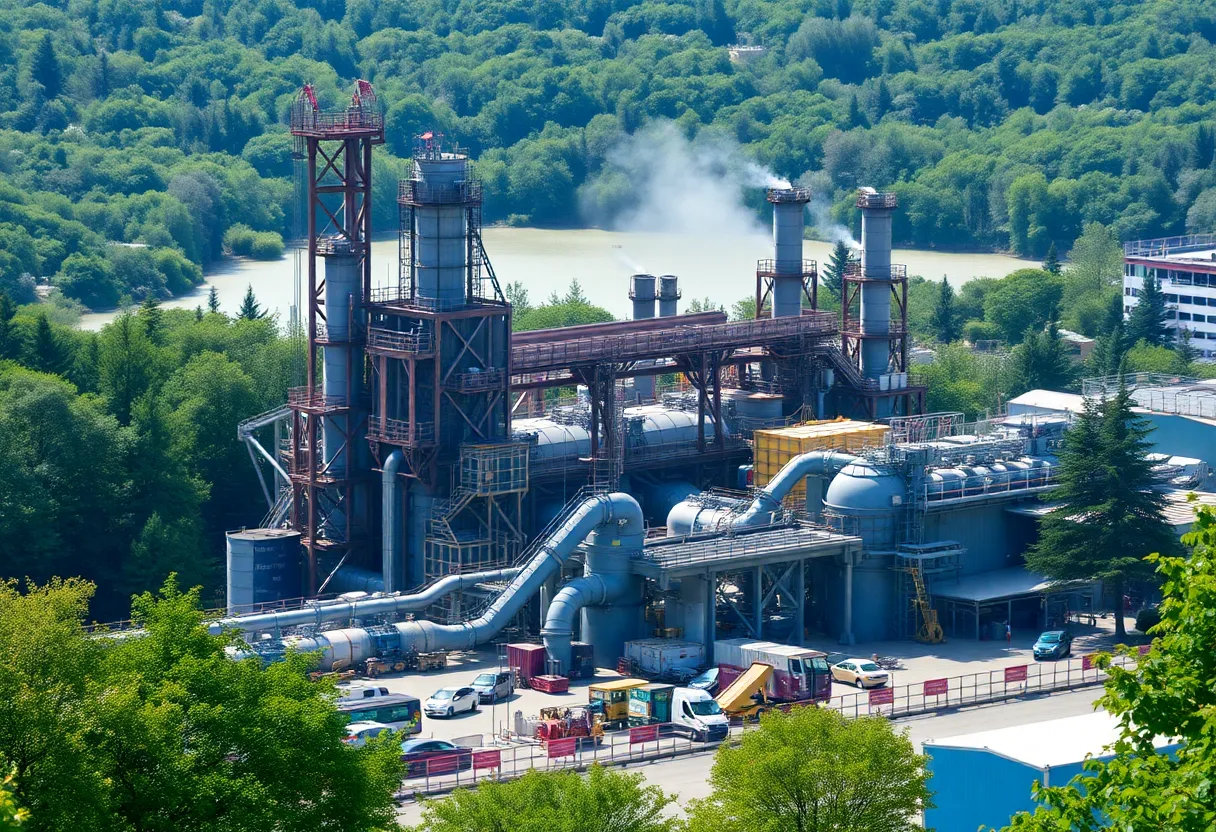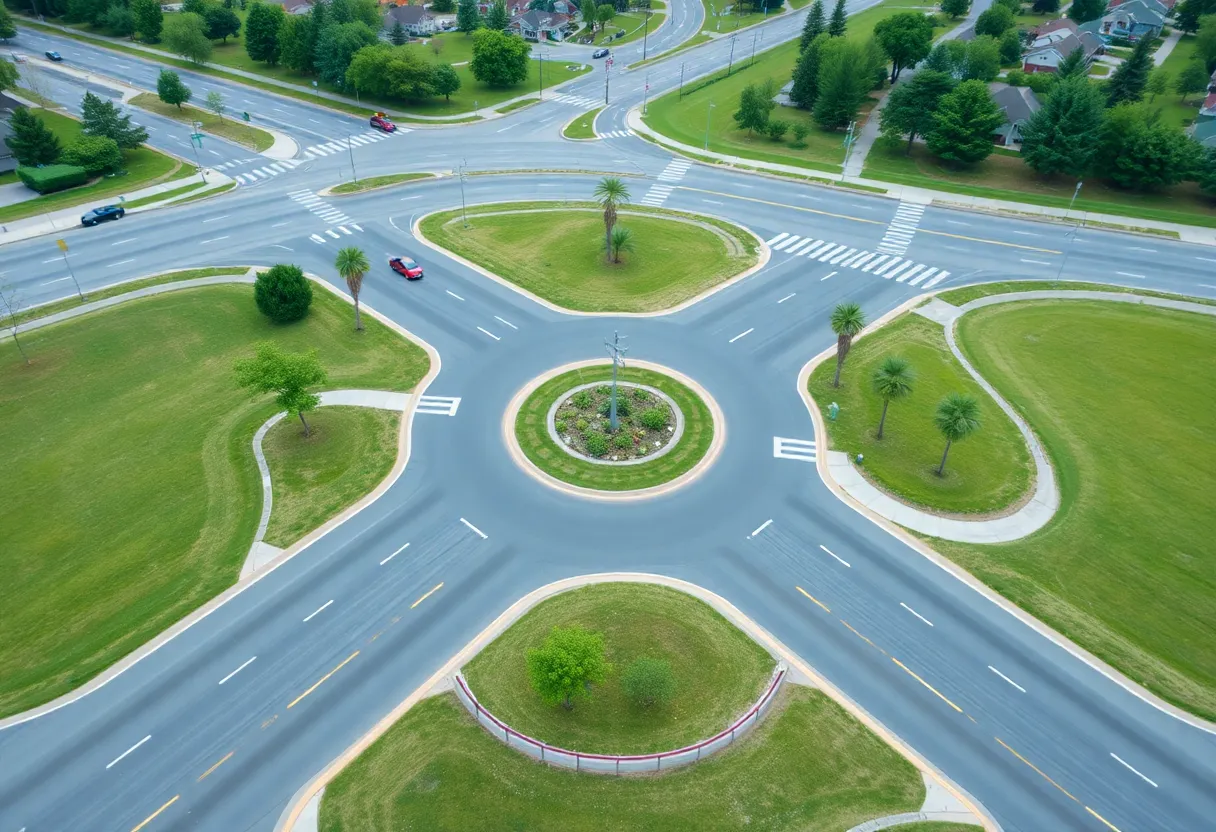News Summary
As of June 2025, over 3,600 oil wells in Louisiana are submerged, raising concerns about environmental hazards and safety for local communities. A recent study highlights the need for urgent action to address the risks posed by these aging and leaking wells, which can cost significantly more to plug when underwater. With 7,583 unplugged wells, Louisiana faces a pressing environmental crisis as coastal erosion persists. The intersection of well safety and environmental accountability remains a critical issue for state officials and local residents.
Venice, Louisiana – As of June 5, 2025, more than 3,600 oil wells that were originally drilled on land or in marsh areas are now submerged in open water south of Venice, Louisiana. This alarming trend has raised concerns about environmental hazards and safety risks for local communities. A recent analysis conducted using historical shoreline maps from the U.S. Geological Survey revealed the extent of these submerged wells.
The study, which was carried out by The Times-Picayune and The Advocate, examined well data from the Department of Energy and Natural Resources, focusing on the “spud date,” or drilling start date, of each well. The researchers compared well locations with shoreline maps to determine their current status, with most well data originating from the last available shoreline map from 2020 and applying a 40-meter “buffer” to account for potential inaccuracies in mapping. The methodology was independently reviewed by researchers at Tulane University and deemed scientifically valid.
Louisiana’s coastal wetlands hold the highest density of oil and gas wells in the U.S. However, the potential environmental hazards posed by these wells have largely gone unaddressed. The state is home to a staggering 7,583 unplugged wells, both offshore and inland, which is significantly more than the combined total of Texas, Alabama, and California. Currently, approximately $246 million in state funds is earmarked for plugging these wells, but this is only sufficient to cover about 850 of the total unplugged wells, which corresponds to just 11% of the total.
State officials have expressed concerns that the costs associated with plugging submerged wells are much higher than their on-land counterparts, at times reaching four times the expense. Aging and leaking wells pose a dual threat: they jeopardize local ecosystems and increase navigation hazards. For example, a recent incident involved a shrimp boat that struck a submerged well and subsequently sank. The environmental risks continue to escalate as Louisiana experiences land loss due to coastal erosion and subsidence.
While many of the wells are permanently plugged, hundreds remain active and necessitate ongoing inspection and maintenance. Crews are currently engaged in efforts to seal aging wells in order to prevent oil contamination. However, historical plugging practices may not meet today’s environmental standards. State officials have noted ongoing challenges relating to the financial security required for well closures, stating many older submerged wells lacked adequate financial protection during the time of drilling.
The analysis uncovered a troubling trend of underreporting associated with older wells, some of which have gone missing or remain undocumented. Incidents similar to the recent sinking of the shrimp boat are expected to become more frequent as additional wells become submerged over time. Plugging wells in water can cost approximately $400,000, compared to $100,000 for corresponding operations on land, which adds significant pressure to state resources.
Notably, only 12 of the 3,654 wells analyzed are still active in oil production, underscoring the impact of environmental changes on the oil industry within the region. As the situation develops, the intersection of coastal erosion, well safety, and environmental accountability remains a pressing issue for Louisiana and its communities.
Deeper Dive: News & Info About This Topic
- NOLA: Louisiana Sunken Oil Wells
- Wikipedia: Oil Well
- Carbon Herald: New Life for Old Wells
- Google Search: Louisiana Oil Wells Environmental Impact
- CBS News: Louisiana Coast Oil Leak
- Google Scholar: Louisiana Oil Wells Environment
- Louisiana Illuminator: Orphan Well 4
- Encyclopedia Britannica: Ocean Drilling
- Louisiana Illuminator: Offshore Drilling
- Google News: Louisiana Orphan Wells

Author: STAFF HERE NEWORLEANS WRITER
The NEW ORLEANS STAFF WRITER represents the experienced team at HERENewOrleans.com, your go-to source for actionable local news and information in New Orleans, Orleans Parish, and beyond. Specializing in "news you can use," we cover essential topics like product reviews for personal and business needs, local business directories, politics, real estate trends, neighborhood insights, and state news affecting the area—with deep expertise drawn from years of dedicated reporting and strong community input, including local press releases and business updates. We deliver top reporting on high-value events such as French Quarter Festival, New Orleans Jazz & Heritage Festival, and Essence Music Festival. Our coverage extends to key organizations like the New Orleans Chamber of Commerce and Greater New Orleans, Inc., plus leading businesses in energy, healthcare, and education that power the local economy such as Entergy, Ochsner Health, and Tulane University. As part of the broader HERE network, including HEREShreveport.com, we provide comprehensive, credible insights into Louisiana's dynamic landscape.




